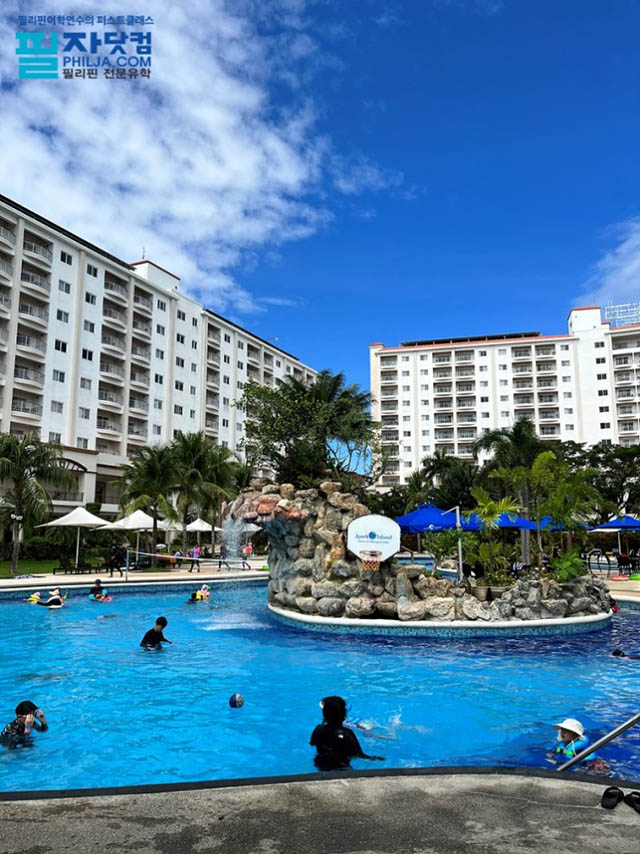
-
МјРЇСІИёСЖШИМі
-
 Malacañang Palace-Official Residence of the Pres
Malacañang Palace-Official Residence of the Pres 138,933
138,933 -
 Amana Water Park
Amana Water Park 115,446
115,446 -
 IFUGAO TRIBE
IFUGAO TRIBE 109,425
109,425 -
 Santacruzan-The Queen of all Filipino Festivals109,325
Santacruzan-The Queen of all Filipino Festivals109,325 -
 Water Refilling Station: an alternative source of drink107,374
Water Refilling Station: an alternative source of drink107,374 -
 LAMBANOG-THE POOR MAN\'S DRINK104,565
LAMBANOG-THE POOR MAN\'S DRINK104,565 -
 Christmas Parol [lantern in English]104,398
Christmas Parol [lantern in English]104,398 -
 HANGING RICE97,110
HANGING RICE97,110 -
 Taoist Temple94,029
Taoist Temple94,029 -
 Corn Fields in the Philippines90,508
Corn Fields in the Philippines90,508
Sword Making in Pangasinan
Do you know what the movies Lord of the Rings, Braveheart and Batman Begins have in common aside from being epic action blockbusters? The swords and blades used in the films are from the Philippines.
They did not come from Batangas where the balisong (a knife) is famous for but from a town in Pangasinan named Pozorrubio. The maker of the world class knives and swords is Blade Culture International (BCI). Hernando de Guzman, an entrepreneurial management degree holder and proprietor of BCI inherited this 20 year old family legacy from his father and grandfather who were both blacksmiths.
Because the swords and knives are bestsellers and blockbusters like the movies in which they were used, BCI has distributors in the United States, Germany, France and Singapore. The craft is world class and superior in quality that its Japanese line composed of katana or samurai swords has won for the company its first international award.


CALASIAO, Pangasinan? The Pinoy komiks (comic book) character ? Panday,? the blacksmith popularized in the movies by the late actor Fernando Poe Jr., has been embedded in the consciousness of most adult Filipinos. Did you know that the Philippines is famous for itЁЏs swords? ItЁЏs true.
Swords are made in many parts of the Philippines. Some of the best swords are made in Tugaya, Lanao del Sur Province right here in Mindanao. I went to Tugaya with Feyma back in 2007, and we had a great time. We saw swords being made right in front of us.


Sword making, historically, has been the work of specialized smiths or metalworkers called bladesmiths or swordsmiths. Swords have been made of many different materials over the centuries and with a variety of tools and techniques. While there are many criteria for evaluating a sword, generally the four key criteria are hardness, strength, flexibility and balance.
A good sword has to be hard enough to hold an edge along a length which can range from 18 in (46 cm) to more than 36 in (91 cm) and at the same time it must be strong enough and flexible enough that it can absorb massive shocks at just about any point along its length and not crack or break. Finally, it should be balanced along its length so that it can be easily wielded, although many functional swords are purposefully unbalanced
Process:
Sword fabrication breaks down into roughly three processes: forming, heat treating and finishing. Depending on many factors such as base materials, location and era these processes might merge, overlap or be dispensed with entirely. A sword's long edges, excluding the pommel and hilt, constitutes the cutting component of the weapon.
1. Forming=Swords can be shaped by a variety of metalworking techniques. In some times and places one technique has been used exclusively, in others a combination of techniques have been used. The primary techniques are forging and stock removal.
Forging uses heat to bring the material to a malleable state. The material is then hammered to shape, typically using hammer and anvil together with specialized set and fuller tools depending on the particular technique. There are a variety of forging techniques for sword making and many variations upon those.
Stock removal shapes the sword from prepared stock that is larger in all dimensions than the finished sword by filing, grinding and cutting. While the technique has been available for centuries it was not widely used for making swords until the 19th or 20th century as it is wasteful of the raw material. Where iron and steel are plentiful this method is frequently used as it requires less skill and time. In places and times where iron and steel have been more rare and valuable stock removal has not been used except as part of the finishing process.
2. Heat treating=After the workpiece is done being formed, it is normalized. The blade is carefully and evenly heated and then cooled slowly. The point of normalizing is to remove the stresses which may have built up within the body of the blade while it was being forged. During the forging process the blade might be heated and cooled differentially creating stress, some parts might be hammered more than others, some areas hammered enough to work harden. If these stresses are left in the blade they could affect the finishing and when it came time to heat treat the blade, the hardening and tempering might not be as even. Potentially enough stress could be added that the blade would be weak in spots, weak enough that it could fail under enough stress.
As one of the last processes in fabricating a sword is quenching and tempering it. Quenching hardens the metal so it holds an edge longer but this also makes it very brittle. To restore some ductility and durability the sword is tempered. With swords, due to their length, the challenge is greater as in a typical quenching it is possible to bend or warp the blade if it is not introduced to the quenchant smoothly and evenly.
Swords could also be differentially hardened so that some parts, like the cutting edge, are harder than the body.
3. Sharpening=Once the blade had been heat treated, a sword would be ground with progressively finer abrasives until the desired finish was achieved. It would then be sharpened. The sharpness of a sword, and ability to keep that edge, is based on the angle of the edge and the width of the body of the sword. How long it can hold the edge is also dependent on the material used.
4.Finishing-Finishing encompasses polishing, decorating, and crafting and assembling the hilt, guard and sheath.
The swordsmith would be most concerned with the state of the blade itself and possibly decorating the blade and preparing the guards and pommel. Other artisans would likely be involved in the work of fashioning the hilt, sheath and other furniture; and in any fine decoration.





- ЁЄSalapan Festival
- ЁЄEmpanada Festival (Batac City)
- ЁЄPADUL-ONG FESTIVAL
- ЁЄKaumahan Festival in Barili
- ЁЄKAGASANGAN FESTIVAL
- ЁЄLalin Festival in Asturias
- ЁЄTinabuay Festival
- ЁЄGayon Bicol Festival
- ЁЄPINYASAN FESTIVAL in CAMARINES
- ЁЄMAGAYON FESTIVAL
- ЁЄBANAUAN FESTIVAL (BARANGAY.GUA
- ЁЄThe Tuna Festival in Gensan
- ЁЄPINTOS FESTIVAL BOGO CITY, CEB
- ЁЄPanaad sa Negros
- ЁЄPasalamat Festival



- ЁЄCEBU WESTOWN LAGOON
- ЁЄGREEN LAGOON, COMPOSTELA
- ЁЄCALLAO CAVE
- ЁЄMOUNT PINATUBO IN PHILIPPINES
- ЁЄBATAN ISLAND in Batanes.
- ЁЄCALAGUAS ISLAND, CAMARINES NOR
- ЁЄAGHO ISLAND
- ЁЄCARAMOAN ISLAND IN CAMARINES S
- ЁЄSAMBAWAN ISLAND
- ЁЄPLACES TO VISIT IN LANAO DEL N
- ЁЄPLACES TO VISIT IN ZAMBOANGA C
- ЁЄPlaces to visit in Rizal Provi
- ЁЄHISTORIC TOWN OF VIGAN CITY, I
- ЁЄCAMBUGAHAY FALLS, SIQUIJOR ISL
- ЁЄTINUY-AN FALLS in BISLIG CITY,












 ЧЪРкДхФФ ОпАЃЛѓДу ПРЧТ
ЧЪРкДхФФ ОпАЃЛѓДу ПРЧТ 11ГтПЌМг МвКёРкИИСЗ 1РЇ
11ГтПЌМг МвКёРкИИСЗ 1РЇ
 ГЛАд ИТДТ ОюЧаПј УЃБт
ГЛАд ИТДТ ОюЧаПј УЃБт
 ИЎОѓ ЧаБГ ЙцЙЎБт
ИЎОѓ ЧаБГ ЙцЙЎБт
 СжИЛПЁ ГЛАЁ ОЕ КёПыРК?
СжИЛПЁ ГЛАЁ ОЕ КёПыРК? УжАэАЁМККё РЬКЅЦЎ СёБтБт
УжАэАЁМККё РЬКЅЦЎ СёБтБт
 ЧіСіПЁМЕЕ ЧЪРкДхФФ!
ЧіСіПЁМЕЕ ЧЪРкДхФФ! ЧіСіПЁМ АЁДЩЧб
ЧіСіПЁМ АЁДЩЧб









 ЧЪРк ЦЏБо Ч§ХУ! ФСНУОюСі МКёНК
ЧЪРк ЦЏБо Ч§ХУ! ФСНУОюСі МКёНК



 АЁСЗПЌМіЗЮ ДйЧдАд ОзЦМКёЦМ
АЁСЗПЌМіЗЮ ДйЧдАд ОзЦМКёЦМ





























